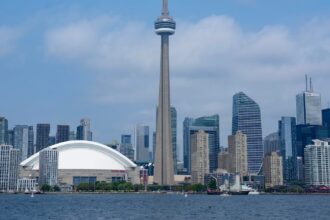Saskatoon homeowners are bracing for a significant financial squeeze as city officials unveiled projections for substantial property tax increases over the next two years. The latest financial forecast indicates residents could face a jarring 9.9 percent increase in 2024, followed by an additional 7.34 percent hike in 2025—numbers that have sparked immediate concern across Saskatchewan’s largest city.
“These are preliminary estimates that reflect the challenging fiscal realities we’re navigating,” explained Kerry Tarasoff, Saskatoon’s Chief Financial Officer, during Tuesday’s Governance and Priorities Committee meeting. “Multiple factors are converging to create unprecedented pressure on our municipal budget.”
The proposed increases stem from a perfect storm of economic pressures facing the city. Inflation has driven up operational costs across all departments, while aging infrastructure demands increasingly urgent—and expensive—attention. According to the financial report presented to council, deferred maintenance on roads, water systems, and public facilities has created a substantial infrastructure deficit that can no longer be ignored.
City officials pointed to several specific factors driving the tax burden, including a $13.2 million increase needed for police services, $7.6 million for transit system improvements, and approximately $10.5 million to address critical infrastructure renewal projects. The city’s financial services department noted these investments are essential to maintain basic service levels that residents expect.
Mayor Charlie Clark acknowledged the difficulty of the situation while emphasizing the need for fiscal responsibility. “We understand these numbers are challenging for residents who are already dealing with increased costs of living,” Clark stated. “However, we’ve reached a point where further delaying these investments would ultimately cost taxpayers more in the long run.”
The proposed increases would translate to approximately $22.50 more per month for a homeowner with a property valued at $350,000 in 2024, with additional increases following in 2025. This represents one of the steepest tax hikes in Saskatoon’s recent history, surpassing even the increases implemented during the economic downturn of 2008-2009.
Community reaction has been swift and largely critical. The Saskatoon Chamber of Commerce expressed concern about the impact on local businesses, particularly small enterprises still recovering from pandemic-related challenges. Meanwhile, the Saskatoon Taxpayers’ Association called for council to reconsider its spending priorities and find additional efficiencies before approving such substantial increases.
“We understand the necessity of maintaining critical services,” said Jennifer Morrison, spokesperson for the Saskatoon Homeowners Coalition, “but many families simply cannot absorb these kinds of increases when they’re already struggling with higher grocery bills, mortgage rates, and utility costs.”
Council members indicated they would scrutinize the budget thoroughly before finalizing any tax increases. Several councillors requested detailed breakdowns of departmental spending and suggested exploring alternative revenue sources to potentially reduce the burden on property owners.
The city’s budget deliberations will continue throughout the fall, with public consultations scheduled for October. Residents will have opportunities to provide input through town halls, online surveys, and direct communication with their ward representatives. The final budget approval is expected in December, with any approved increases taking effect in January 2024.
These projected increases place Saskatoon among several Canadian municipalities facing difficult fiscal choices in the post-pandemic era. Cities across the country are confronting similar challenges balancing essential service delivery with taxpayer capacity during a period of economic uncertainty.
As Saskatoon contemplates these substantial tax increases, the fundamental question remains: can the city find a sustainable balance between maintaining necessary services and infrastructure while ensuring tax burdens remain manageable for residents already facing significant economic pressures?

























